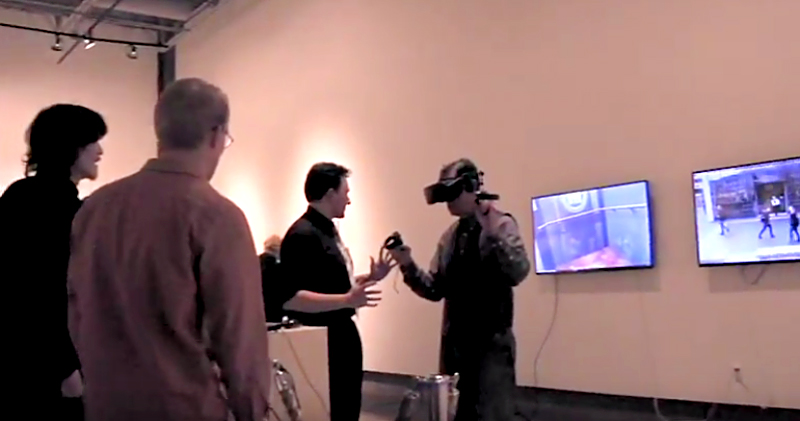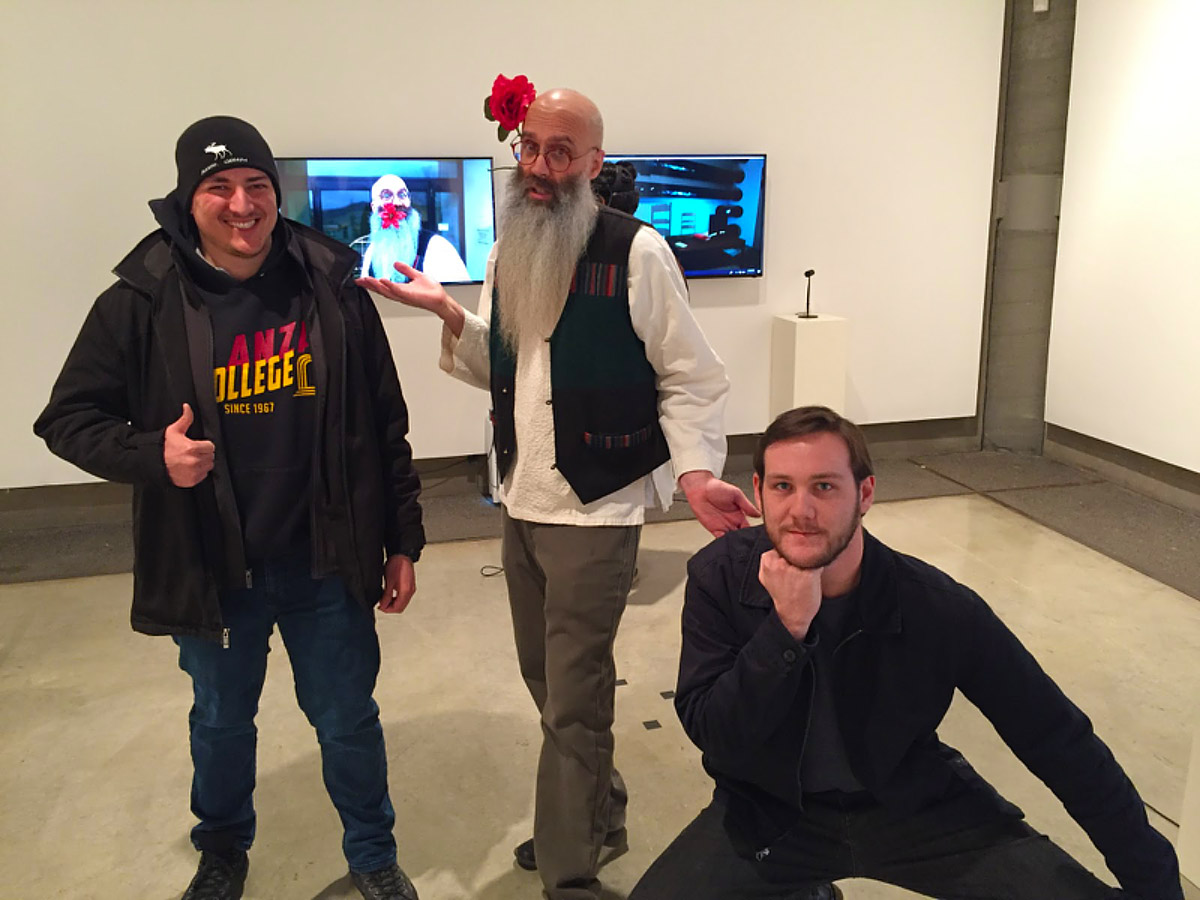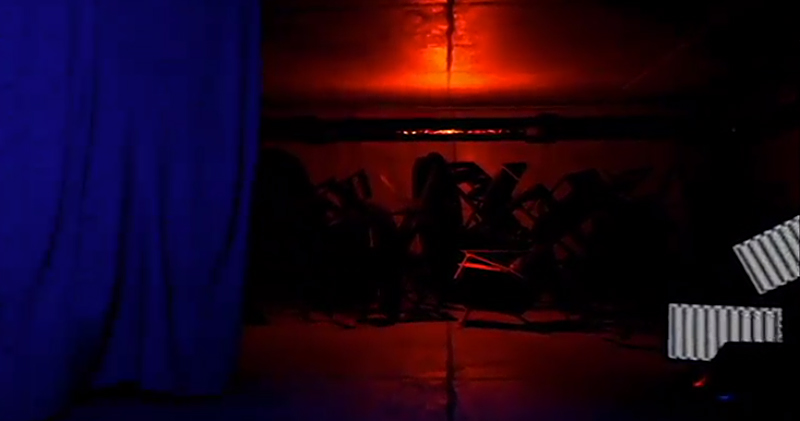SOU students renovate “Hypertext Hotel”
There was always a vacancy for students and some special guests in a particular place of lodging. Enter the “Hypertext Hotel….”
The year was 1990. A room of students typing on Macintosh desktops at Brown University participated in the first ever hypertext writing workshop. Under the wing of postmodern fiction’s legendary trickster, Professor Robert Coover, students accessed, constructed and soiled the binary walls of a collaborative writing space consisting of hyperlinked windows of language and the occasional MacPaint rendered illustration.
The writers relied on traditional storytelling and the grace of the reader’s imagination to raise what became the Hypertext Hotel, located in what was – and to some extent remains – an unexplored city block in literature’s scholarly district.
Fast-forward to 2019. The writing that made up the hotel – believed this time last year to be mostly lost to time – has been recovered. The HTML files that once ran on an application called Storyspace were found on Coover’s old faculty PowerBook G4 and are now entering virtual reality.
The Hotel redux, titled “Hypertext Hotel – VR,” has been guided by Southern Oregon University Professor Robert Arellano, founder of the Emerging Media and Digital Art (EMDA) major at SOU, hypertext literature pioneer and former student of Coover’s. Arellano was one of the students who sat in the Brown computer lab writing hotel rooms and subplots of his own.
Early in this year’s Winter term, Arellano enlisted two all-star EMDA students, Andrew Masek and Quinn Jacobus, to model 3D rooms based on the original writing in the recovered HTML files. Masek and Jacobus have since created, in just 12 weeks, the first iteration of Hypertext Hotel – VR.

“In 2018, at the same time as our practicum class planned to re-open the Hypertext Hotel, the Game Dev club had gotten real traction and purchased an Oculus along with a high-end PC to run VR in Unity,” Arellano said. “Meanwhile, Miles Inada had a 3D class that was a real turning point in the EMDA program. That’s how I met Quinn Jacobus, one of the main student designers of the Hypertext Hotel – VR.”
The project, which was on display at SOU’s Schneider Museum of Art from Jan. 24 to March 16, stood as the first VR installation in a museum that has proven hospitable to digital art. The (re)opening night produced much energy – to be expected when art, wine and novel interactive realities are made free to the public.
Hypertext Hotel – VR appeared next to four other faculty artists and two returning guest artists – Adam Bateman and Maria De Los Angeles – in a series called “From Ignorance to Wisdom” (consistent with the current campus theme of the same name).
“From Ignorance to Wisdom” may seem a vague title for the historic hypertext project. But as Arellano points out in his artist statement, the project was made possible by the atypical process of working with students rather than lecturing – as Coover had done in the previous writing lab on early-model Mac computers. The process requires all parties to admit ignorance, listen to the wisdom of others and learn together. It produces an effective learning environment in which students produce “school projects” worthy of display in nationally recognized art museums and creative professors are positively challenged.

The installation did encounter roadblocks, as may be expected of an experiential digital art project.
“On the opening day, we learned that the PC we planned to run ‘Hypertext Hotel – VR’ on during the Schneider show did not have a powerful enough CPU,” Arellano said. “We scrambled to find an alternative, but there was not a powerful enough rig at the university that could be dedicated to the museum for the required length of time.
“For the opening reception, Andrew Masek, the other main student designer, loaned us his personal machine. And the following day, the owner of Medford’s Cyber Center, Anthony Kaiserman, stepped in and kindly donated a computer for the show’s entire six-week run.”
When you ride the elevator for a unique perspective from the hotel’s 1300-level room, you might see that the project has been a catalyst for electronic literature, convincing the most reluctant of writers to jump into the quickly growing digital pool.
The hotel also follows up on its promise of being a generative, collaborative and largely anarchic experience – one that a lone author would find hard to come by. An author could write a letter to another writer, who then writes on that letter and sends it to yet another writer. The software – whether the original Storyspace or the open-source Twine – allow a writing experience conducive to collaboration, and one that will become more streamlined and collaborative with time.

After putting on the Oculus headset and walking through the 3D hotel rooms, an observer might be left to ask what’s next in the Hotel project? The “Hypertext Hotel – VR” showcases what is possible for artists, in largely accessible ways. Writers collaborate with each other in a computer lab and merge their work with that of 3D artists, VR experts, programmers and others. The redux is a catalyst for more students and artists, such as Masek and Jacobus, to collaborate by bringing the original stories to life again – maybe alongside some new ones.
In line with the tradition of storytelling, the hotel has become a place to write stories inspired by what is possible now, in celebration of what came before.

Story by James Cutrona, EMDA class of 2018


